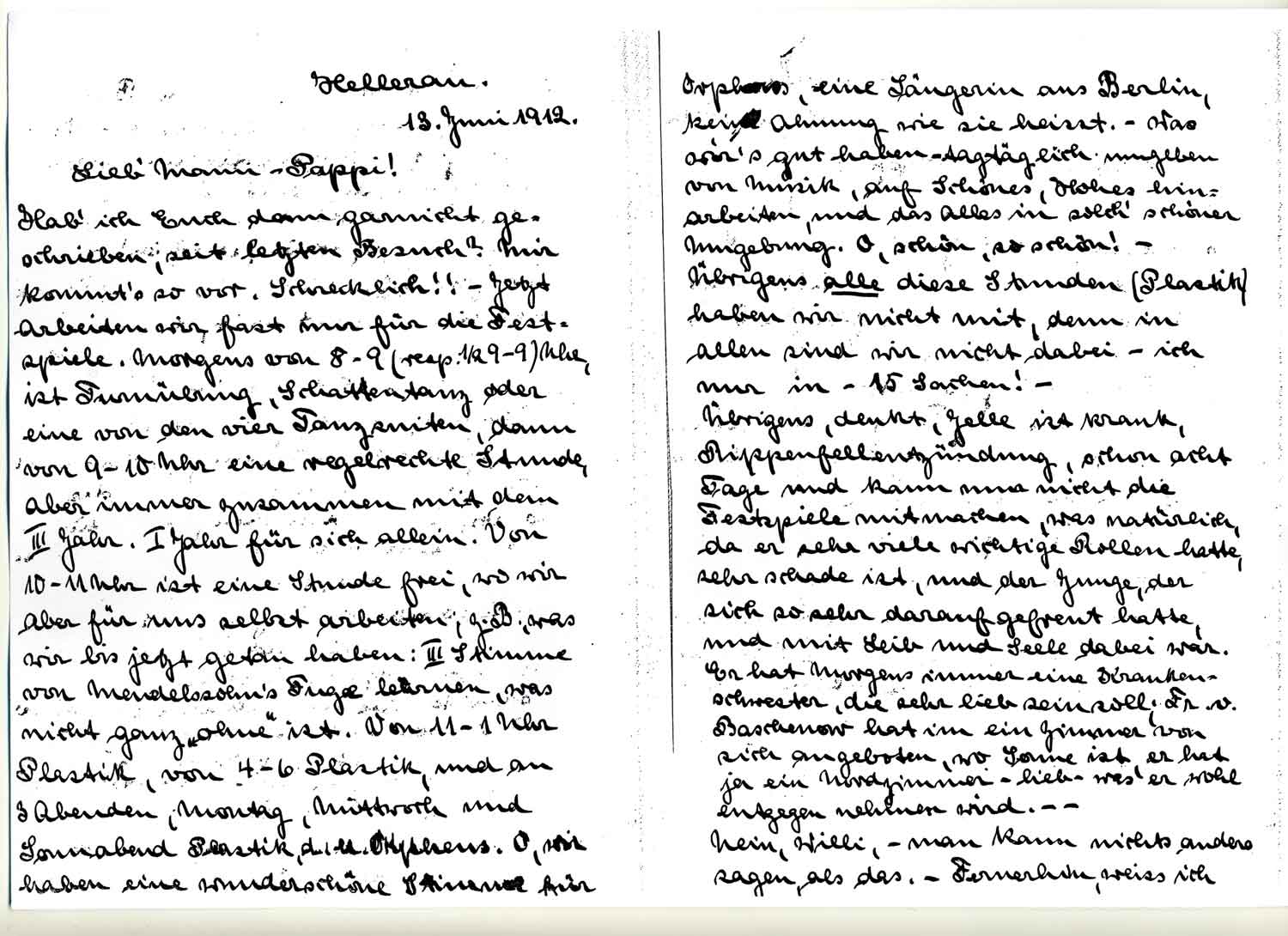Jaques-Dalcroze music school⎟ Teaching method
At the heart of the Jaques-Dalcroze method was his conviction that every human emotion produces a gesture. The mediating factor for the human being is music, which synchronises the body and emotions. The aim of artistic processes in rhythmics is to be able to coordinate the elements of space, time, and energy (i.e. one’s own body) in such a way that music can be experienced in movement and movement in music. This is not done with the fixed movement elements of classical choreography, but through improvisation and individual expression of feelings.
Content of this article

First double page of the letter opposite.
Bildarchiv Dr. Bern Carrière.
“Responding to the stimulus of hearing through movement”
The spirit that emanated from the Jaques-Dalcroze music school drew more than five hundred pupils, and especially schoolgirls, from home and abroad to its rhythmic gymnastics classes in the years leading up to the outbreak of the First World War.
At the heart of the Jaques-Dalcroze method was his conviction that every human emotion also produces a gesture. Jaques-Dalcroze did not want to tell stories, as was the case in classical dance, but to portray feelings. The mediating factor for the human being is music, which synchronises the body and emotions. Music, language and movement are closely related because they consist of comparable structures of rhythm, articulation, dynamics and three-dimensionality. George Bernard Shaw commented: “In Hellerau they taught the alphabet and grammar of movement”. By ‘responding to the stimulus of hearing through movement’, the participants learn to react spontaneously to signals from the music. The aim of artistic processes in rhythmics is to be able to coordinate the essential elements for any movement of space, time, and energy (i.e. one’s own body) in such a way that music can be experienced in movement and movement in music. This is not done with the fixed movements of classical choreography, but through improvisation and individual expression of feelings.
“The aim of rhythmics teaching is to bring the pupils to the point where, once they have completed their studies, they can no longer merely say: ‘I know’, but ‘I feel’.” (Emile Jaques-Dalcroze)
So Jaques-Dalcroze’s relatively short activity did not so much contribute to the modern repertoire of modern dance as provide a foundation for the modern expressive dance of, for example, Mary Wigman, who then passed on the knowledge she had learned in Hellerau to Gret Palucca. Artistic gymnastics also owes much of its inspiration to Jaques-Dalcroze.
